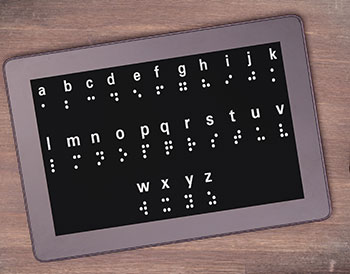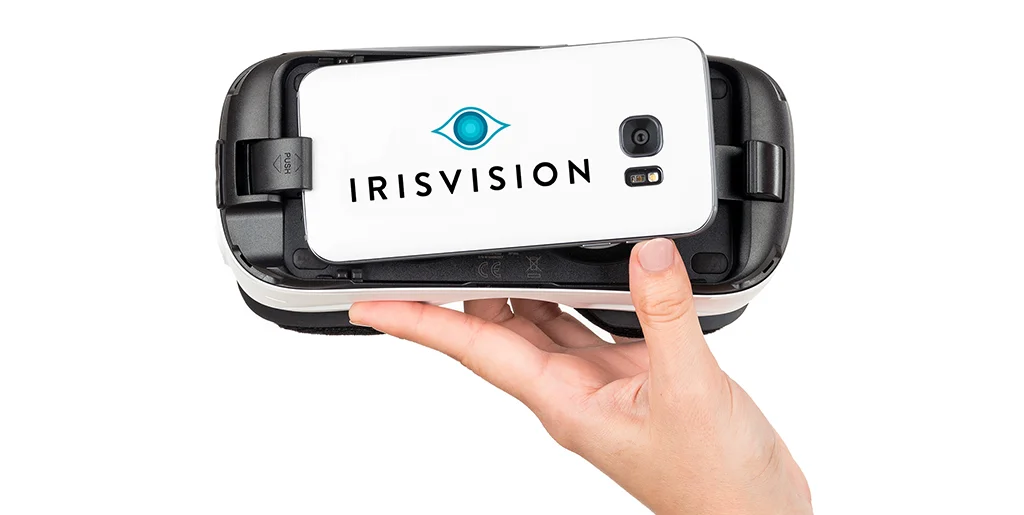Screen Readers for the Blind: Essential Devices for Digital Access
Screen Readers for the Blind: Essential Devices for Digital Access
Blog Article
Empowering Self-reliance With Assistive Technology for the Blind
The combination of assistive technology into the lives of individuals with visual disabilities stands for a significant innovation in advertising self-reliance and self-sufficiency. From cutting-edge screen readers to innovative wise canes, these tools not just improve daily navigating and communication yet likewise encourage individuals to engage meaningfully in numerous facets of life. As we explore the myriad advantages and real-world applications of these technologies, it becomes important to check out the underlying elements that add to their effectiveness and the possibility for future advancements in this vital field.
Summary of Assistive Modern Technology

The advancement of assistive technology is based in concepts of inclusivity and empowerment. Advancements in software, hardware, and sensory enhancements give users with options tailored to their certain demands. From screen readers that convert text to speech, to tactile gadgets that communicate information with touch, these tools transform the way people involve with their environments.
In enhancement to practical applications, assistive technology fosters better social addition and engagement in different markets, consisting of education and learning and work (Screen readers for the blind). As r & d remain to develop, the capacity for assistive innovation to additionally improve the lives of aesthetically impaired individuals remains promising, leading the way for a much more fair society where everybody can flourish
Sorts Of Assistive Tools
A variety of assistive gadgets have actually emerged to sustain individuals with visual problems, each developed to meet specific needs and boost daily functioning. These tools vary from low-tech services to modern advancements, providing diverse alternatives for customers.
Low-tech tools consist of magnifiers and large-print materials that help in analysis and writing. Braille tools, such as Braille slates and stylus pens, make it possible for tactile analysis and interaction. Positioning and mobility help, like white walking sticks, assist customers navigate their setting safely.
On the greater end of the spectrum, electronic magnifying systems and display readers use significant support. Electronic magnifiers permit individuals to expand message and pictures on displays, while screen viewers convert digital material right into manufactured speech, helping with accessibility to information on mobile phones and computers.
Smartphone applications also play a critical role, providing attributes like message acknowledgment and navigating assistance. Wearable innovation, such as wise glasses geared up with augmented truth, is becoming an encouraging tool to enhance situational understanding.
Advantages of Assistive Innovation
The integration of assistive technology substantially enhances the lifestyle for people with aesthetic problems. These modern technologies encourage customers by promoting independence, enabling them to navigate their settings better and do day-to-day tasks with better convenience. For circumstances, screen viewers and magnification software program enable individuals to accessibility electronic information, fostering instructional and specialist chances that may have formerly been out of reach.
Additionally, assistive devices such as wise canes and GPS applications offer real-time navigating support, improving flexibility and safety. This raised freedom not just boosts self-worth however likewise motivates social engagement, permitting customers to take part even more completely in their communities.
Assistive modern technology likewise facilitates interaction, aiding customers get in touch with others via voice acknowledgment and text-to-speech applications. This capacity is crucial for preserving partnerships and accessing important details.
Furthermore, the customization alternatives readily available with numerous assistive modern technologies make certain that customers can tailor tools to their details needs, better boosting functionality and performance. Generally, the benefits of assistive technology for people with visual disabilities are profound, advertising a much more inclusive culture where everybody can pursue their ambitions and goals.
Study and Success Stories
Highlighting the transformative effect of assistive modern technology, numerous instance researches show exactly how people with visual impairments have effectively integrated this post these tools right into their everyday lives. One engaging instance involves a college student that made use of display analysis software to browse scholastic products and online resources properly. This technology not only promoted her education and learning but additionally improved her self-confidence in joining discussions and team jobs.
Another study features a specialist who uses a mobile phone application created for navigating and item recognition. By utilizing this app, he has actually gained back autonomy in both his personal and work settings, permitting him to commute separately and engage with associates more properly.
Furthermore, a senior citizen shared her experience with braille e-readers, which enabled her to access a huge range of literature and remain gotten in touch with her area through publication clubs.
These success stories highlight the essential duty of assistive modern technology in promoting self-reliance, improving quality of life, and advertising social integration for individuals with aesthetic impairments (Voice-activated assistive devices). By accepting these cutting-edge tools, customers can conquer difficulties and seize chances that contribute to their personal and professional satisfaction

Future Fads in Assistive Technology
Advancement in assistive innovation is poised to redefine the landscape of support for people with aesthetic impairments. Arising patterns highlight the combination of fabricated knowledge (AI) and artificial intelligence, which boost the capability of gadgets that help with navigation and details access. For example, AI-driven applications are now qualified of translating aesthetic data in real-time, making it possible for individuals to involve with their environment extra separately.
Additionally, he said the development of wearable technology is advancing quickly. Smart glasses geared up with augmented fact (AR) can give audio summaries of environments, transforming just how individuals connect with public rooms. These gadgets not only advertise freedom yet also foster social inclusion.
Additionally, the Net of Points (IoT) is making homes smarter, permitting for smooth connectivity in between assistive tools and everyday appliances. This connection encourages customers by making it possible for computerized feedbacks and voice-activated controls customized to specific requirements.
Conclusion
To conclude, assistive technology plays a critical function in empowering individuals with aesthetic problems by boosting their self-reliance and engagement with their environments. The diverse variety of applications and gadgets available not only assists in navigating and interaction however also promotes social assimilation and possibilities for professional and individual growth. As innovations continue in this area, the capacity for boosting the high quality of life for those with visual impairments will certainly expand, fostering greater freedom and empowerment.

Report this page